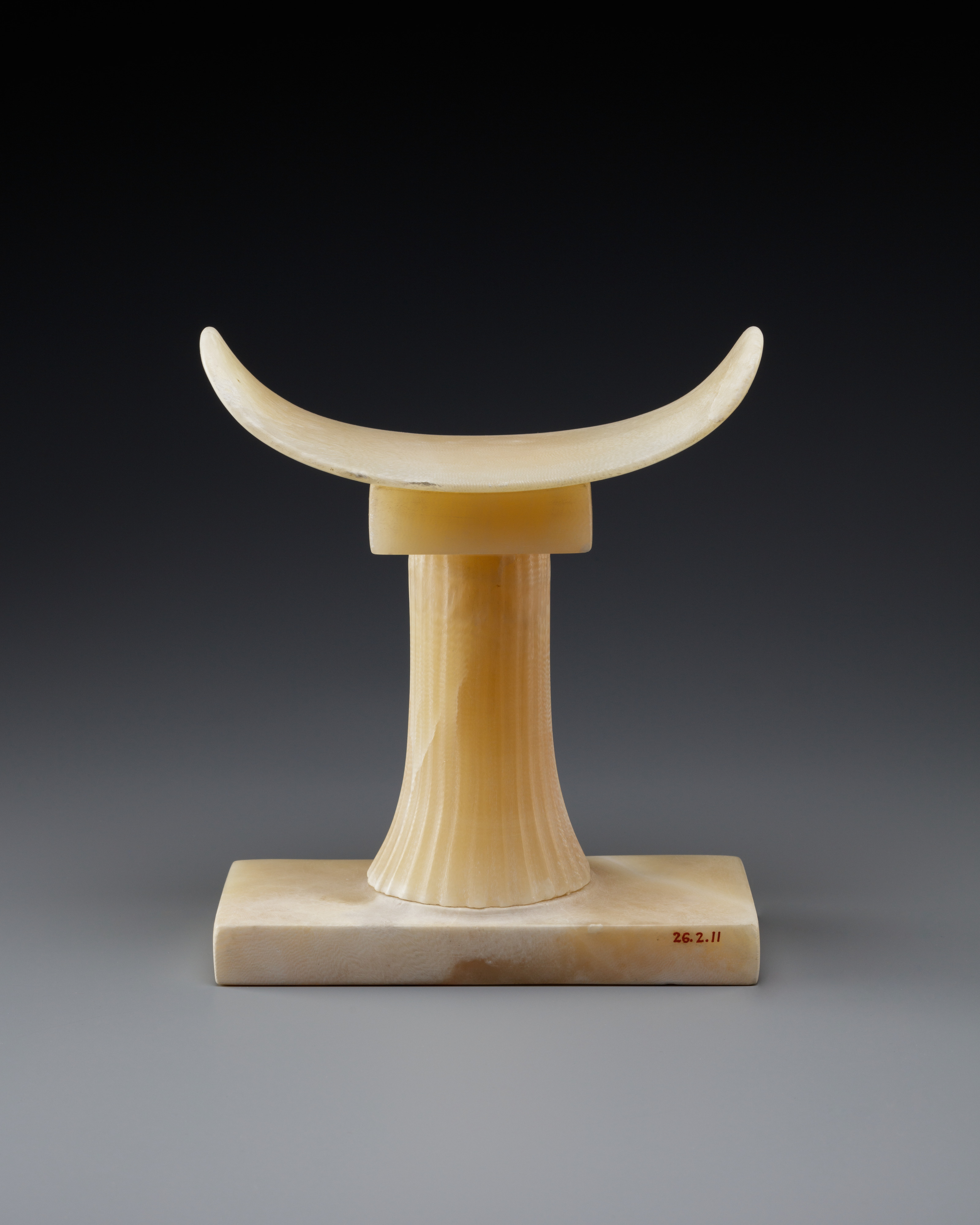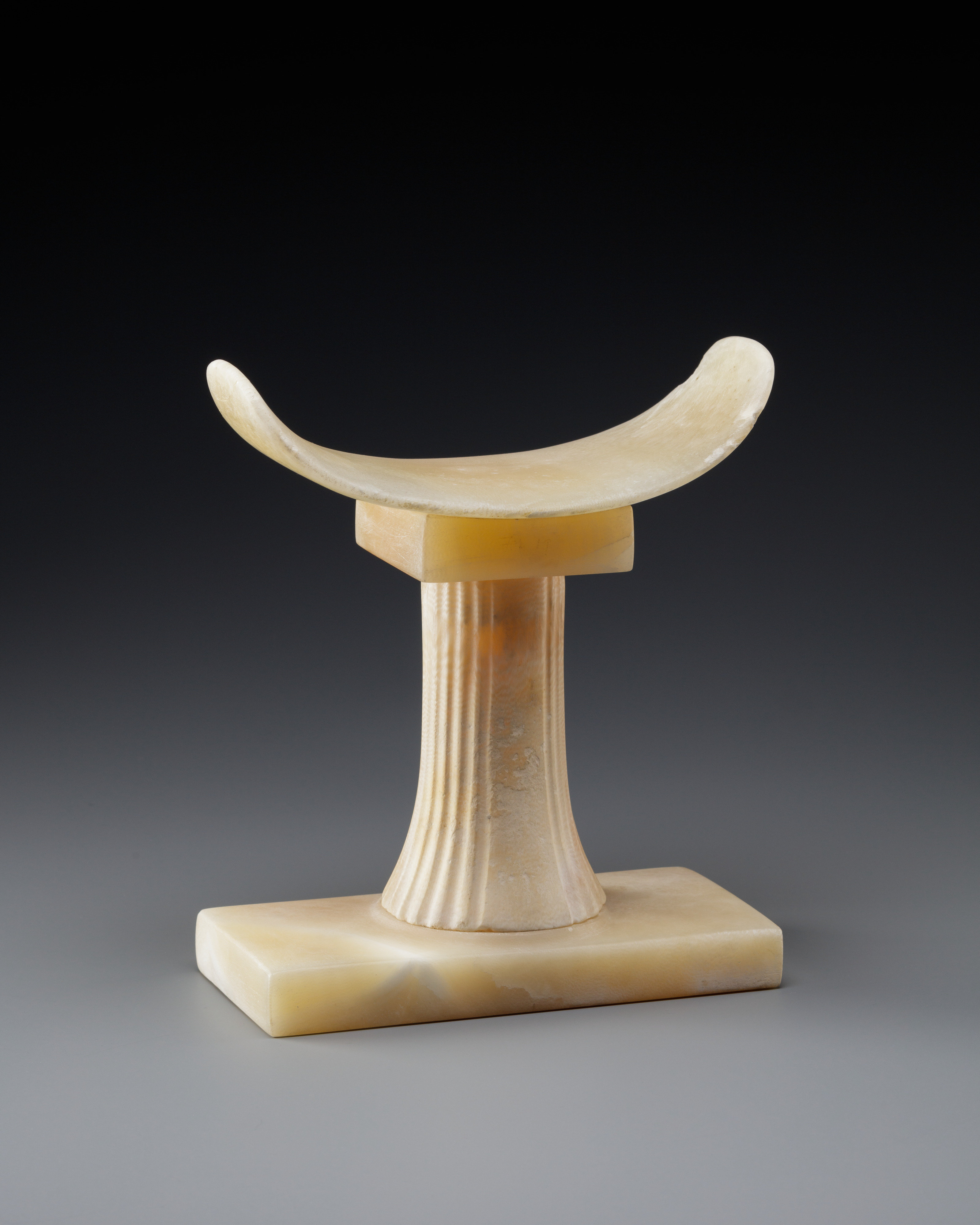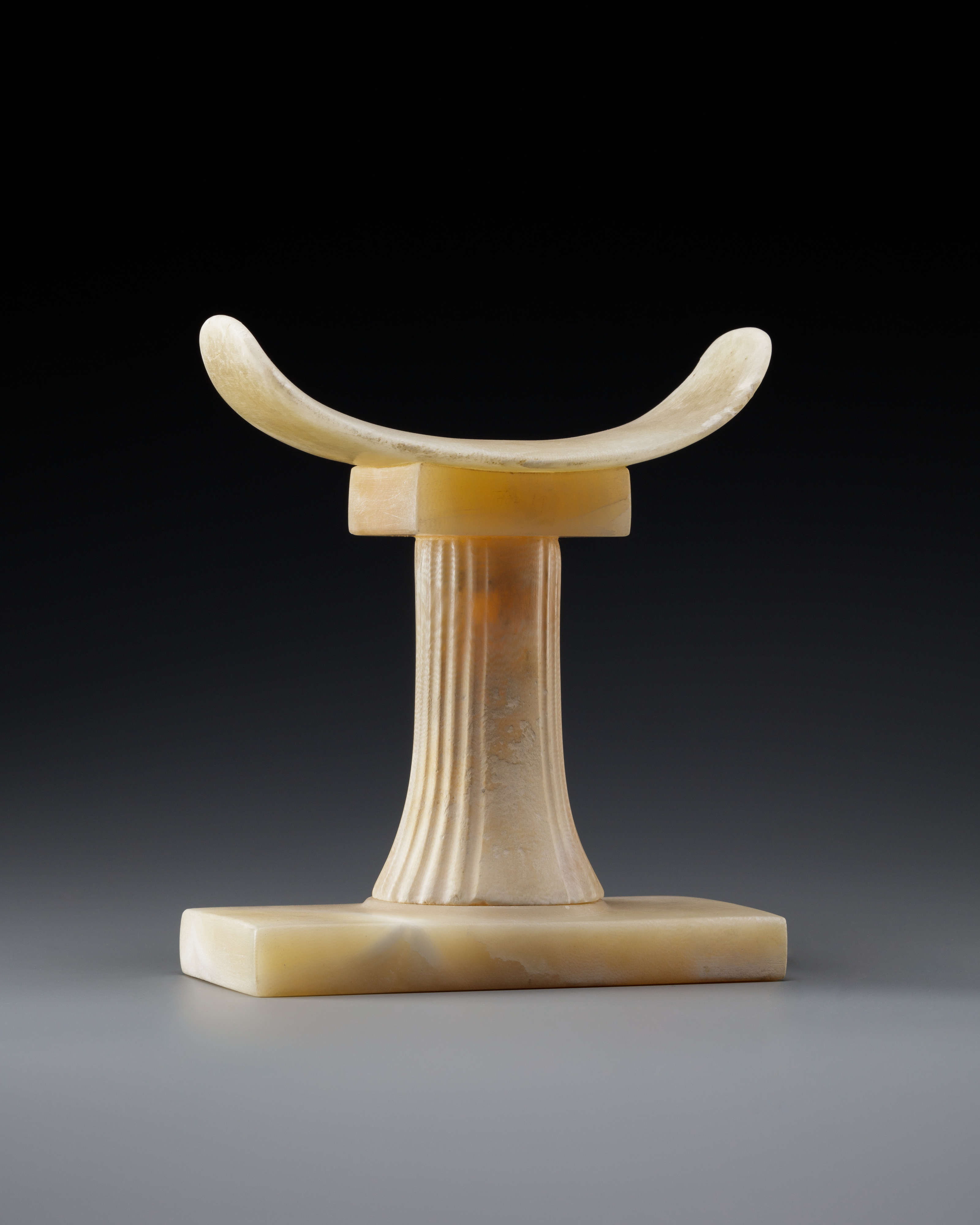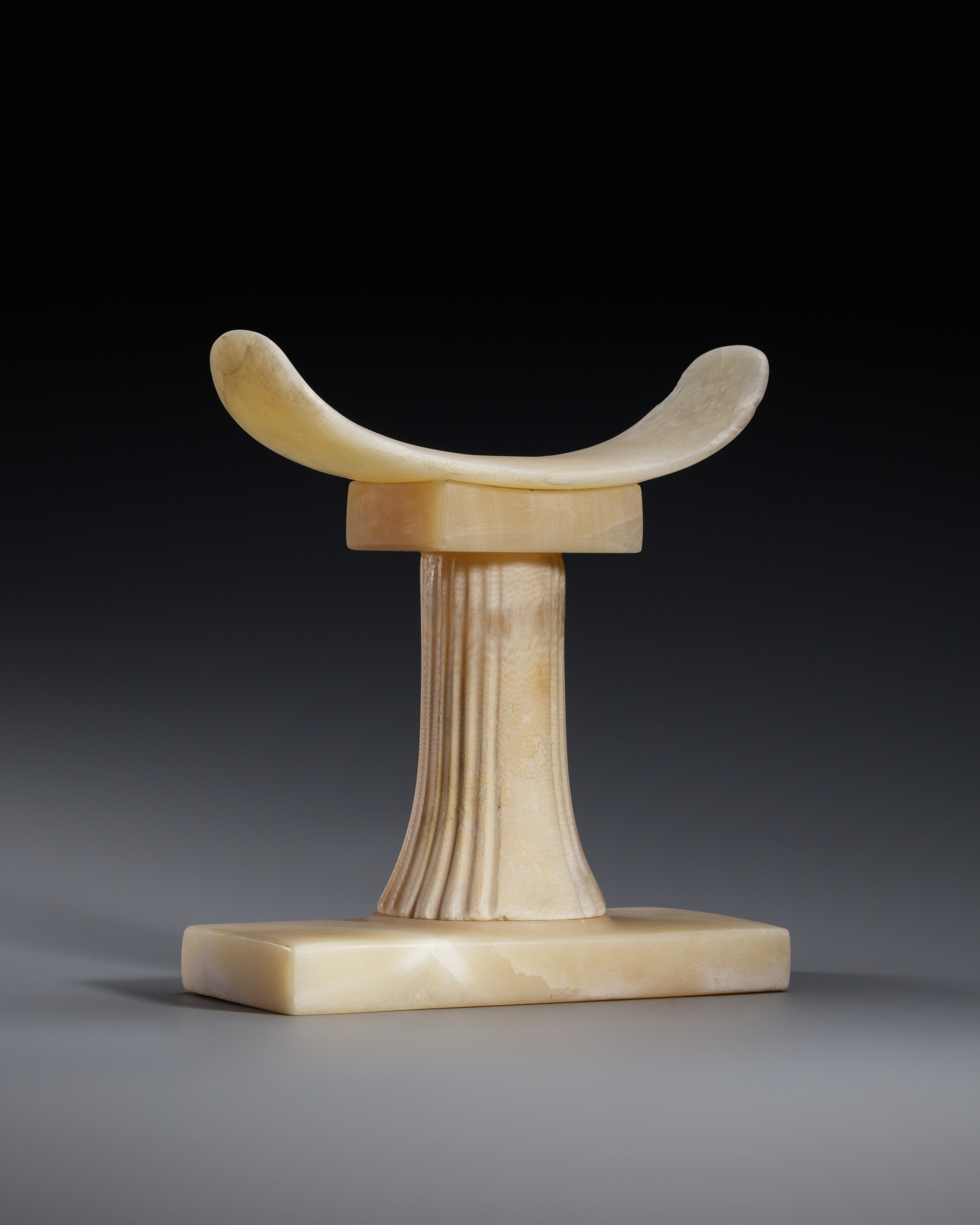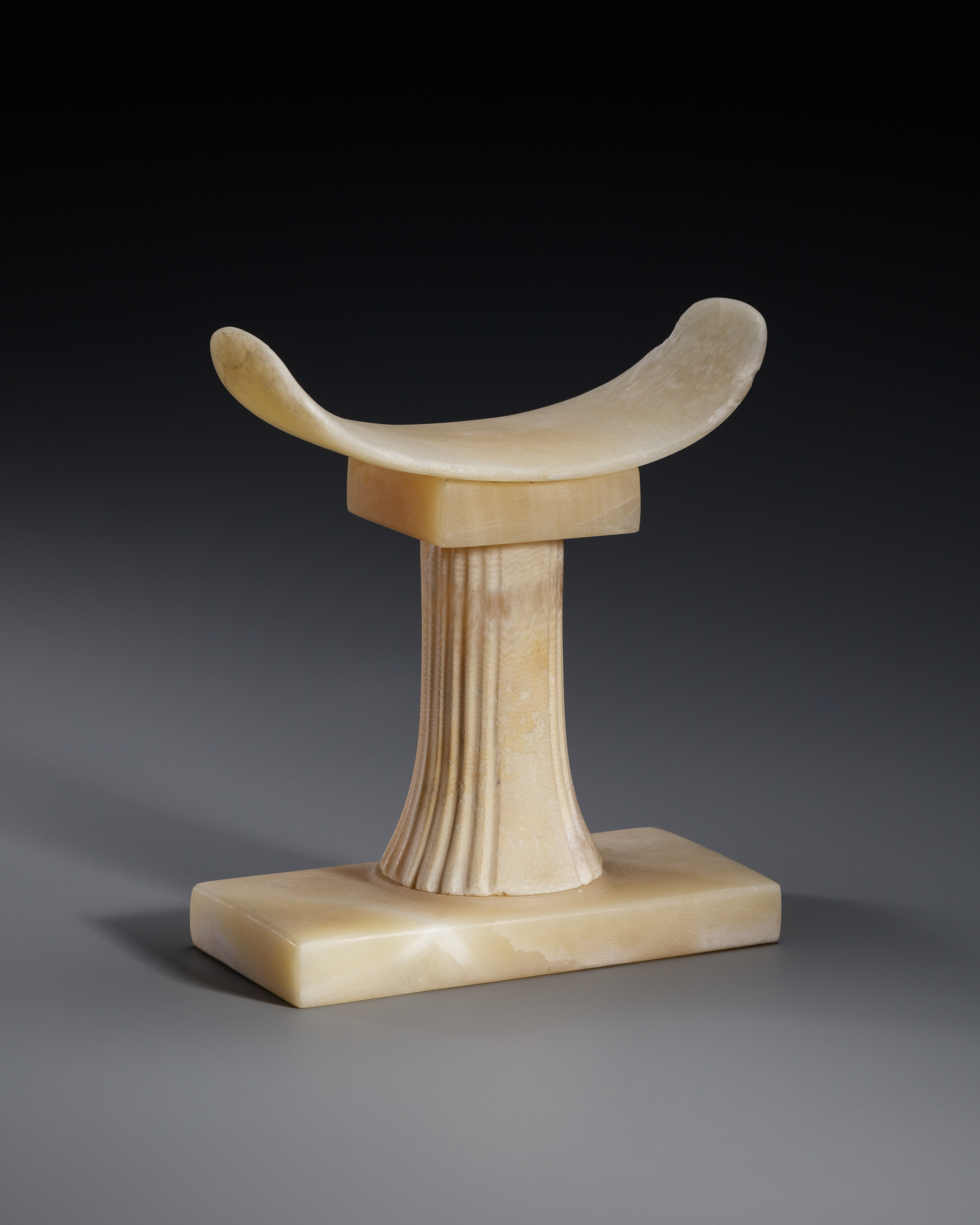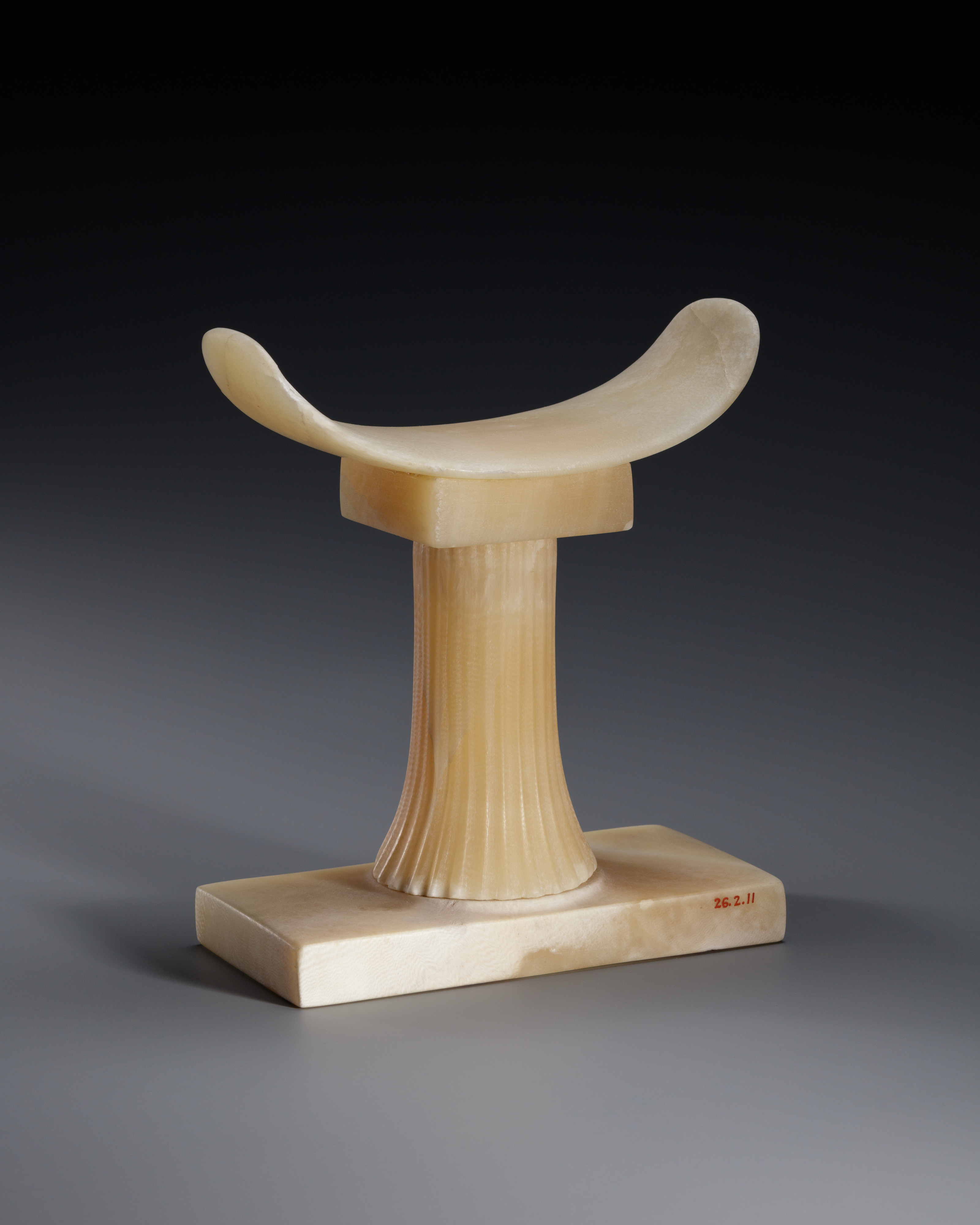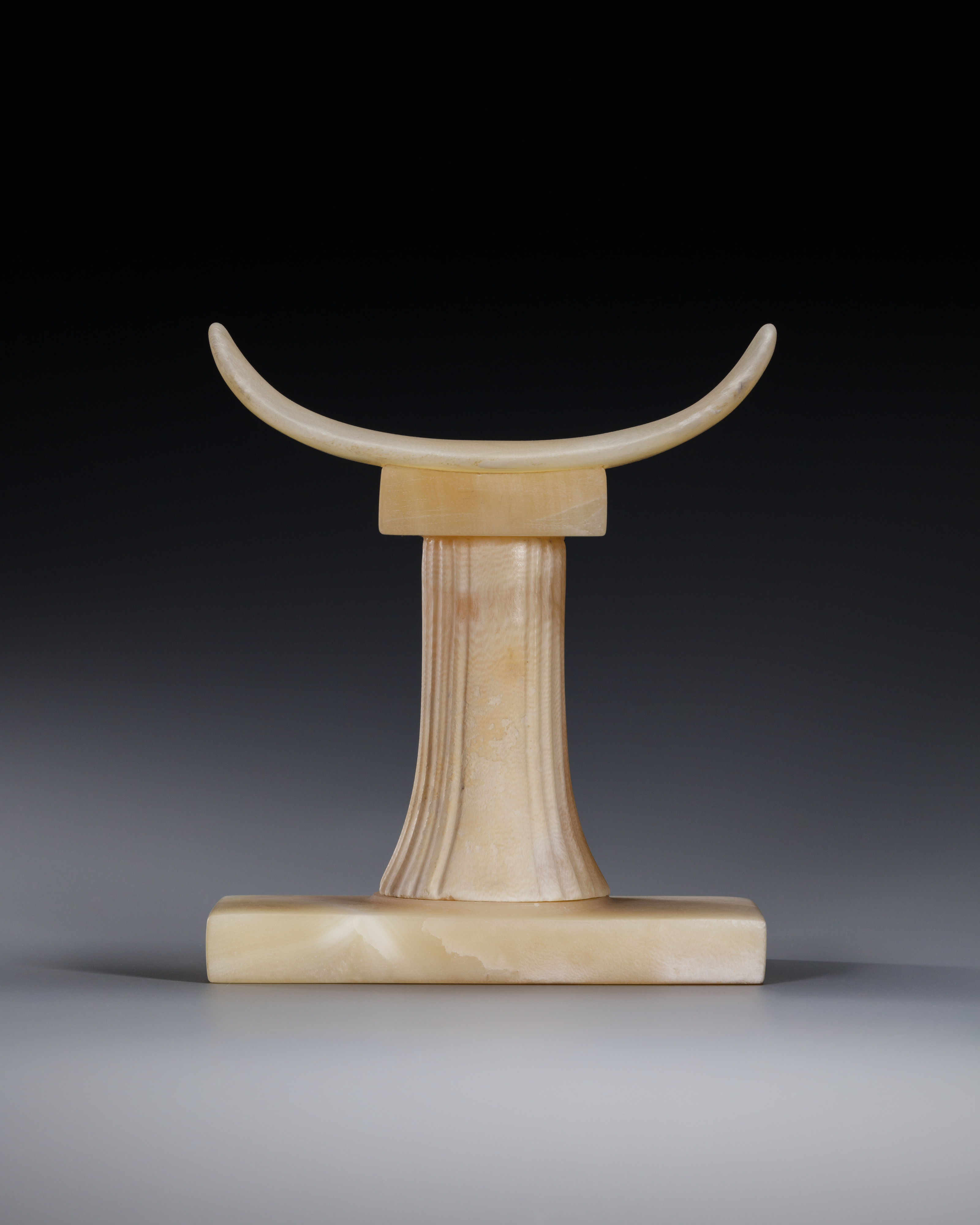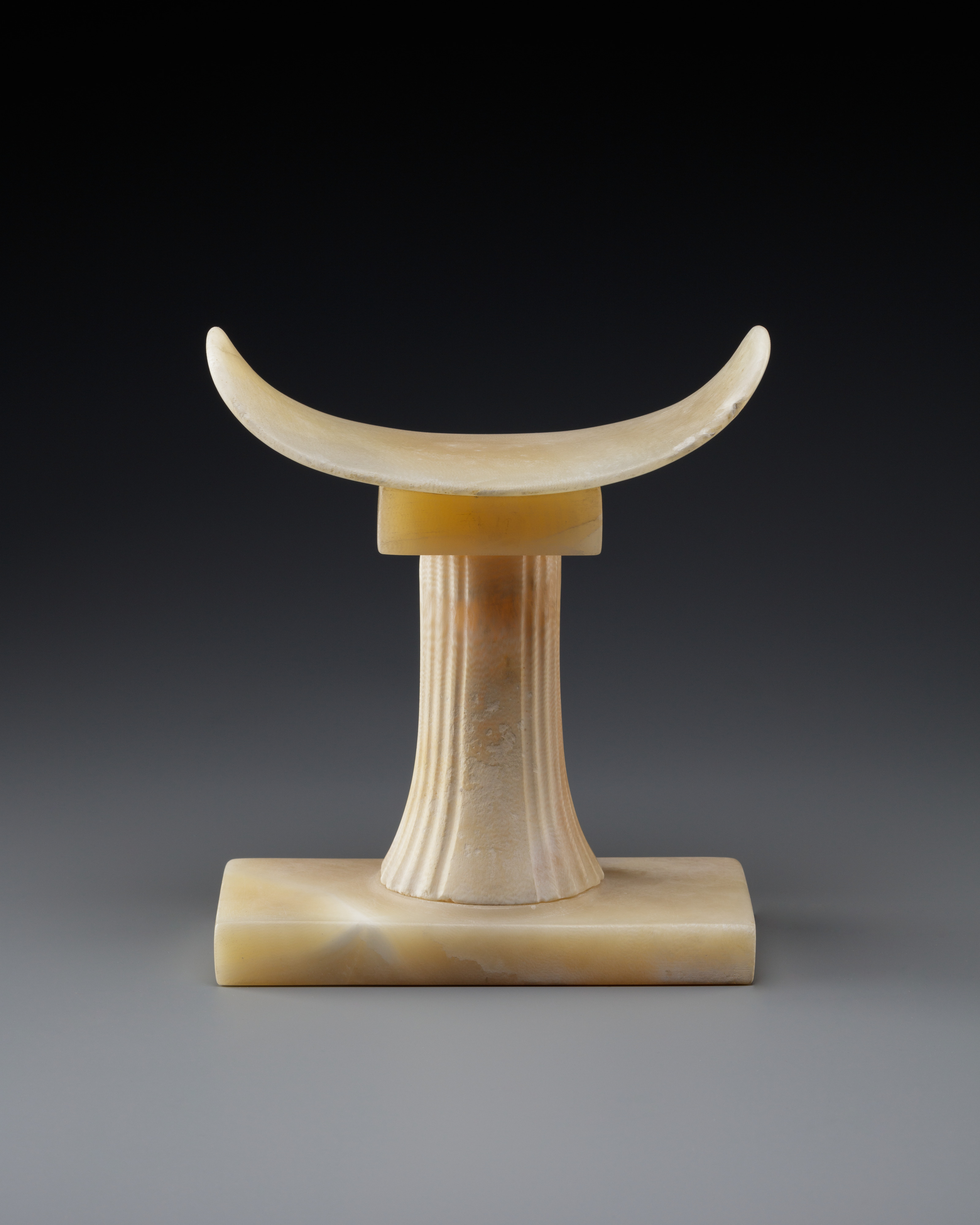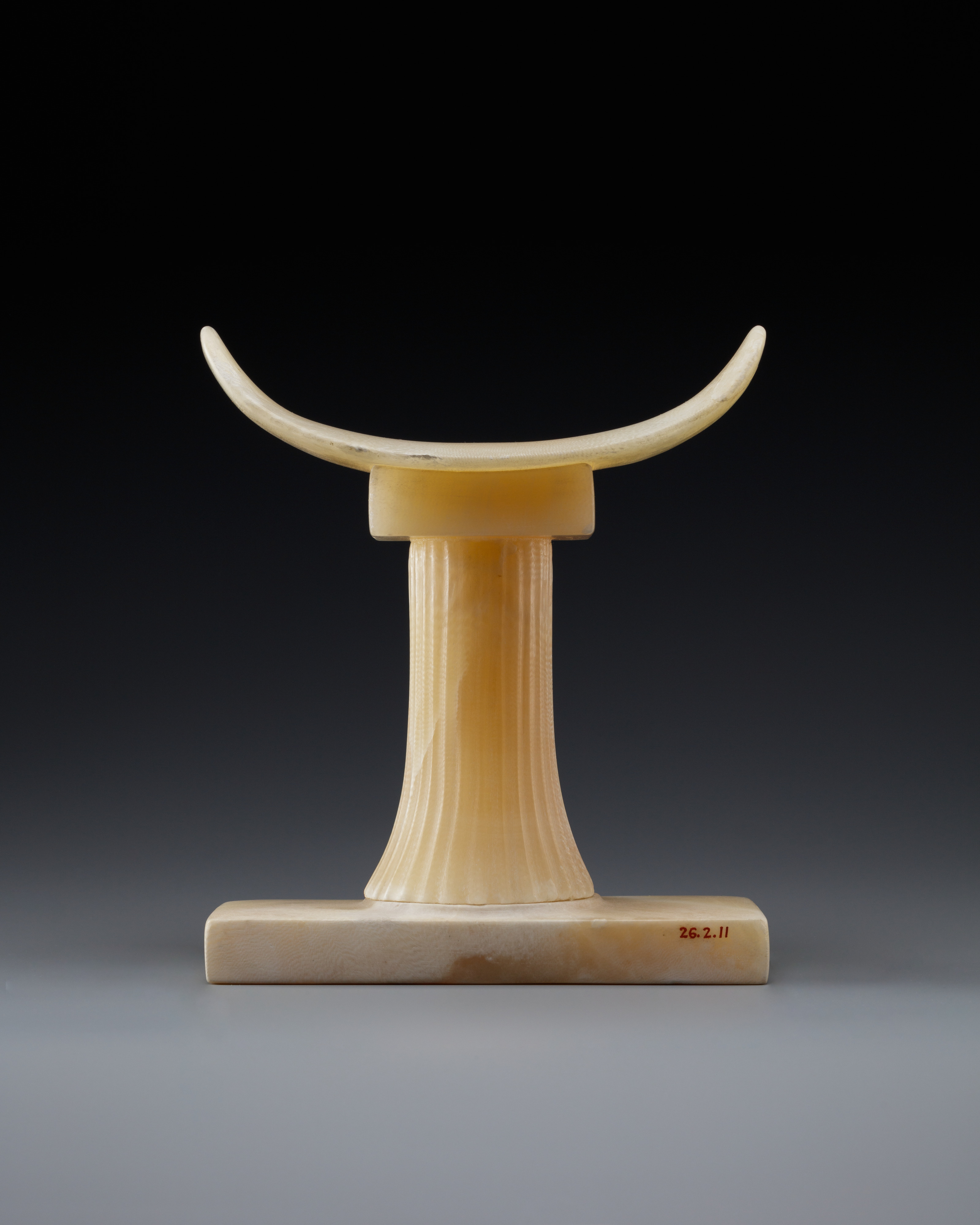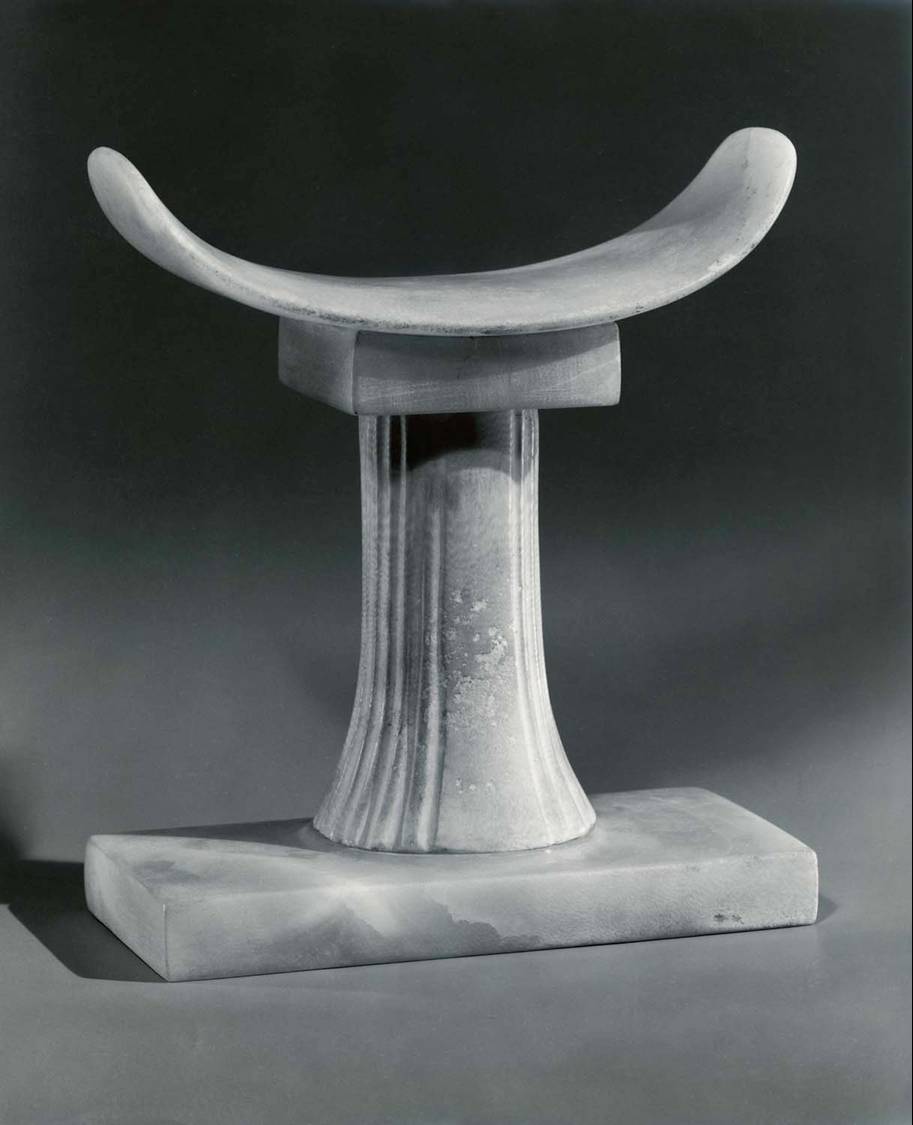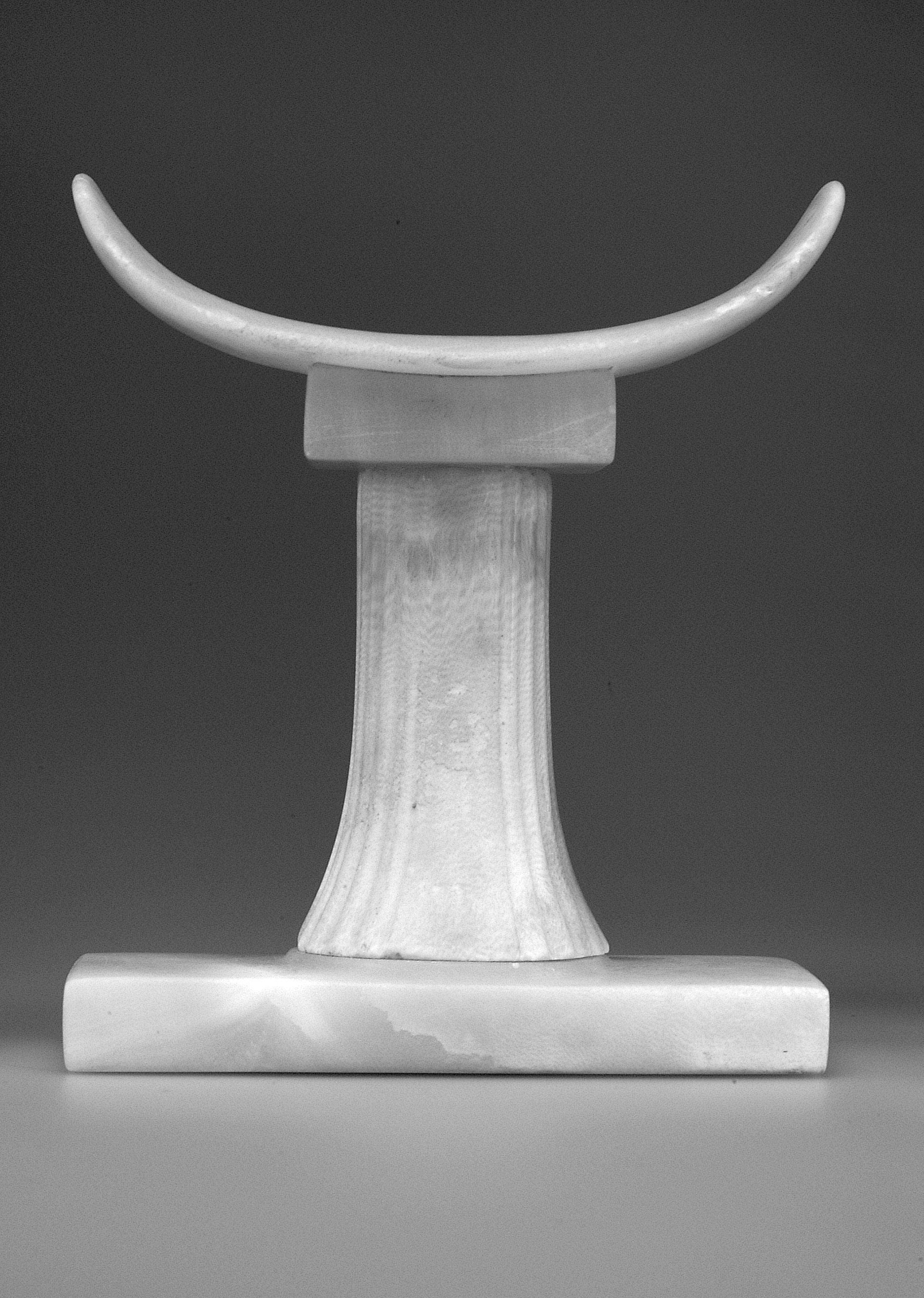Headrest of Khentika
Old Kingdom
This stone headrest was excavated in a wealthy official’s tomb. It appears to have been designed solely for use in the afterlife as its components—pillow, column, and base—were glued together instead of joined using a mortise and tenon mechanism that structured the more common wood examples. Headrests mimicked the sun (the head) rising in the horizon (the headrest’s pillow). Therefore, waking up would have been seen as rebirth for the sleeper, like the sun’s morning appearance was for the world. Many headrests show wear and have impressions from, or actual scraps of attached linen, indicating they were padded for comfort. Although pillows existed, a headrest was cooler and elevated the sleeper’s face away from the insects and scorpions that prowled in the night.
Due to rights restrictions, this image cannot be enlarged, viewed at full screen, or downloaded.
This artwork is meant to be viewed from right to left. Scroll left to view more.


